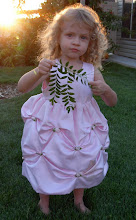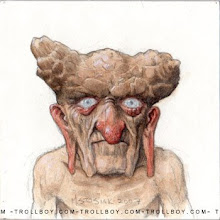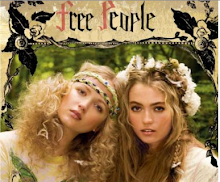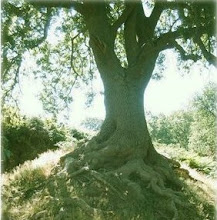 With a little stealth and caution, I was able to observe a reunion between our local garden faery and other visitors. A highlight of my gardening year!
With a little stealth and caution, I was able to observe a reunion between our local garden faery and other visitors. A highlight of my gardening year!
Preternatural Psychologist
Between the first bite and the last is a sort of twilight phase or fugue state. These victims are under vampiric influence to a degree, without being either killed or Turned. Theoretically, this phase could continue indefinitely, perhaps long enough to justify the rumors of immortal human companions to the vampires. A person may be bitten once without apparent ill effect, but is thereafter vulnerable to influence by their attacker--and that influence, however slight, may manifest years later. The use of holy water, the holy cross, or other similar religious object may help to 'cleanse' the bite, but only if the victim believes in its efficacy. The bite and its effects disappear if at any point the attacking vampire is destroyed.
 To my delight, I have discovered a garden faery in our neighborhood.
To my delight, I have discovered a garden faery in our neighborhood. Initially shy and stand-offish, and hiding from humans,
Initially shy and stand-offish, and hiding from humans, as with most faeries, encouragement, attention, gifts, and a non-threatening approach have really brought out the inner Faery Star!
as with most faeries, encouragement, attention, gifts, and a non-threatening approach have really brought out the inner Faery Star! Although faeries can be somewhat demanding* (and confusing) in their relationships with us mere mortals, I hope to see more of this cute little faery in our garden.
Although faeries can be somewhat demanding* (and confusing) in their relationships with us mere mortals, I hope to see more of this cute little faery in our garden.
From Publishers Weekly
Buffyesque baker Rae "Sunshine" Seddon meets Count Dracula's hunky Byronic cousin in Newbery-Award-winner McKinley's first adult-and-then-some romp through the darkling streets of a spooky post-Voodoo Wars world. Now that human cities have been decimated, the vampiric elite holds one-fifth of the world's capital, threatening to control all the earth in less than 100 years, unless human SOFs (Special Other Forces) can hold them at bay by recruiting Sunshine, daughter of legendary sorcerer Onyx Blaise. As breathlessly narrated by Sunshine herself, the Cinnamon Roll Queen of Charlie's Coffeehouse, in the inchoate idiom of Britney, J. Lo and the Spice Girls, Sunshine's coming-of-magical-age launches when she is swarmed by noiseless vampires one night and chained in a decrepit ballroom as an entr‚e for mysterious, magnetic, half-starved Constantine, a powerful vampire whose mortal enemy Bo (short for Beauregard) shackled him there to perish slowly from daylight and deprivation. Most of the charm of this long venture into magic maturation derives from McKinley's keen ear and sensitive atmospherics, deft characterizations and clever juxtapositions of reality and the supernatural that might, just might, be lurking out there in "bad spots" right around a creepy urban corner or next to a deserted lake cabin. McKinley knows very well-and makes her readers believe-that "the insides of our own minds are the scariest things there are."
From Booklist
Rae Seddon, nicknamed Sunshine, lives a quiet life working at her stepfather's bakery. One night, she goes out to the lake for some peace and quiet. Big mistake. She is set upon by vampires, who take her to an old mansion. They chain her to the wall and leave her with another vampire, who is also chained. But the vampire, Constantine, doesn't try to eat her. Instead, he implores her to tell him stories to keep them both sane. Realizing she will have to save herself, Sunshine calls on the long-forgotten powers her grandmother began to cultivate in her when she was a child. She transforms her pocketknife into a key and unchains herself--and Constantine. Surprised, he agrees to flee with her when she offers to protect him from the sun with magic. They escape back to town, but Constantine knows his enemies won't be far behind, which means that he and Sunshine will have to face them together. A luminous, entrancing novel with an enthralling pair of characters at its heart.

Precautions are in order from the night before through the night after the full moon....the new moon occurs when the moon is positioned between the earth and sun. The three objects are in approximate alignment (why "approximate" is explained below). The entire illuminated portion of the moon is on the back side of the moon, the half that we cannot see.
At a full moon, the earth, moon, and sun are in approximate alignment, just as the new moon, but the moon is on the opposite side of the earth, so the entire sunlit part of the moon is facing us. The shadowed portion is entirely hidden from view.
The first quarter and third quarter moons (both often called a "half moon"), happen when the moon is at a 90 degree angle with respect to the earth and sun. So we are seeing exactly half of the moon illuminated and half in shadow.
Once you understand those four key moon phases, the phases between should be fairly easy to visualize, as the illuminated portion gradually transitions between them.
An easy way to remember and understand those "between" lunar phase names is by breaking out and defining 4 words: crescent, gibbous, waxing, and waning. The word crescent refers to the phases where the moon is less that half illuminated. The word gibbous refers to phases where the moon is more than half illuminated. Waxing essentially means "growing" or expanding in illumination, and waning means "shrinking" or decreasing in illumination.
Thus you can simply combine the two words to create the phase name, as follows:
After the new moon, the sunlit portion is increasing, but less than half, so it is waxing crescent. After the first quarter, the sunlit portion is still increasing, but now it is more than half, so it is waxing gibbous. After the full moon (maximum illumination), the light continually decreases. So the waning gibbous phase occurs next. Following the third quarter is the waning crescent, which wanes until the light is completely gone -- a new moon.





























